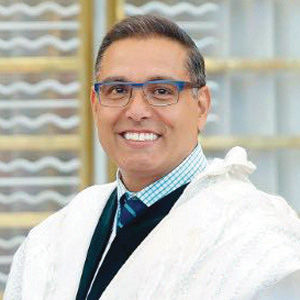Let Passover begin our release from the coronavirus plague
Published April 2, 2020
Simchah Rabbah, Simchah Rabbah, Aviv Hegeea Pesach Ba! Great Joy, Great Joy, spring has arrived and Pesach is upon us!
Each year, as we begin to see the first signs of spring, I am reminded of this lovely song from my childhood. It is of course common for children to croon with excitement about the arrival of warmer weather and holidays, but I have to admit that I, too, feel a great sense of anticipation as I contemplate the turning of the seasons and the arrival of the most widely observed of all Jewish Holy-Days, Pesach.
Passover, after all, includes the greatest number of opportunities for family time, meaningful rituals, and delectable food. It also, if done right, can be a time of great release, catharsis and a sense of the possibility of newness and renewal in our lives. This is why the Passover seder occupies so much attention in Jewish Tradition as it — unlike almost any other ceremony — synthesizes all the above mentioned goals and yearnings into one occasion.
ADVERTISEMENT
So as we prepare for our 5780 Sedarim (seders), I wanted to share one brief teaching, which I hope you will find enlightening and might also serve as a paradigm for your own seder gatherings this year.
Jerusalem based educator, Noam Zion of the Shalom Hartman Institute, with whom I had the great honor of studying for several years, reminds us that the seder is actually “parenting for dummies…It is a how-to manual for parents who don’t know how to create an educational experience on their own. [Thus,] Reading it out loud from cover to cover would be like reading a teacher’s manual out loud. That would be boring. But using it is interesting.”
Zion, who was actually scheduled to visit St. Louis prior to the COVID-19 outbreak, posits that in creating the seder “the Rabbis’ purpose was to get children to ask questions that would then elicit the story of the Exodus, retold as a dramatic first-person re-enactment according to each child’s ability to comprehend, with edible symbols as props in a multisensory experience incorporating eating, seeing, doing, acting and feeling…The Haggadah only offers bits of the story and sample questions; it assumes further unscripted dialogue will ensue.”.
ADVERTISEMENT
Of course, though Zion mentions children as the primary target audience for the seder, Pesach speaks profoundly to all of us — as it addresses to the child within us, to the part of us that is childlike, the part that quests to be educated, elevated and edified.
As we enter the season known in Hebrew as Aviv, I pray that our celebrations of Pesach will not only usher in a time of physical warmth associated with the spring time, but also the spiritual warming that comes from participating in a hallowed ritual that has meant so much to our forebears and that, at least in potential, can be profoundly uplifting and life-affirming for us as well! I can think of no more heartwarming blessing — especially at this challenging time — than to have Pesach serve as a catalyst for and a celebration of the release from the bondage of the Mitzrayim – the narrowing and constraining plaque of COVID-19 that has cast a dark pall upon our global family. VeChen Yehi Ratzon, and may this be the will of the Almighty so that we all enjoy the blessings of a Chag Pesach Kasher Vesameach, a Koshern Un Freilichen Pesach, a sweet, joyous, and meaning-filled Passover.
Rabbi Carnie Shalom Rose is the Rabbi Bernard Lipnick Senior Rabbinic Chair at Congregation B’nai Amoona.
















